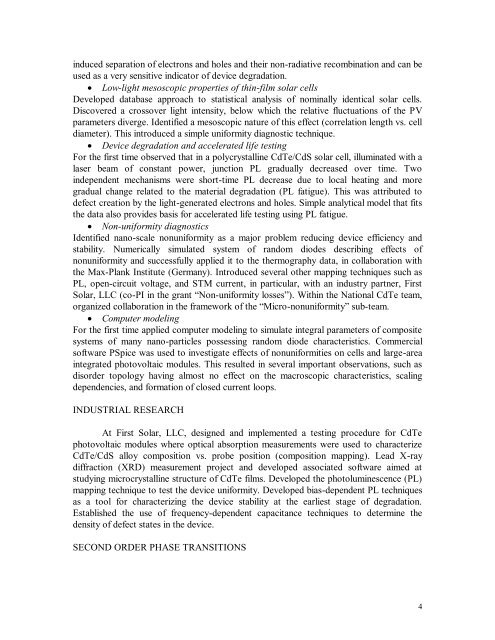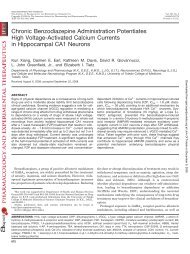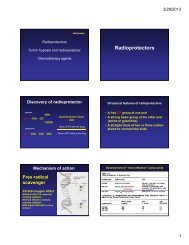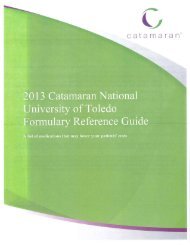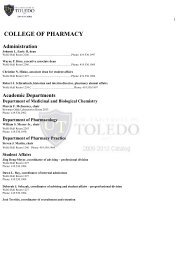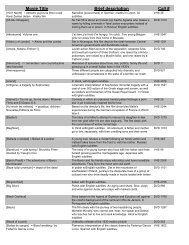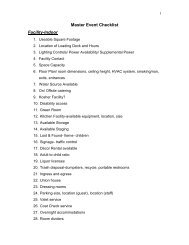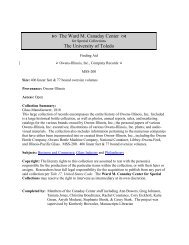Diana Shvydka, Ph.D - The University of Toledo
Diana Shvydka, Ph.D - The University of Toledo
Diana Shvydka, Ph.D - The University of Toledo
Create successful ePaper yourself
Turn your PDF publications into a flip-book with our unique Google optimized e-Paper software.
induced separation <strong>of</strong> electrons and holes and their non-radiative recombination and can be<br />
used as a very sensitive indicator <strong>of</strong> device degradation.<br />
Low-light mesoscopic properties <strong>of</strong> thin-film solar cells<br />
Developed database approach to statistical analysis <strong>of</strong> nominally identical solar cells.<br />
Discovered a crossover light intensity, below which the relative fluctuations <strong>of</strong> the PV<br />
parameters diverge. Identified a mesoscopic nature <strong>of</strong> this effect (correlation length vs. cell<br />
diameter). This introduced a simple uniformity diagnostic technique.<br />
Device degradation and accelerated life testing<br />
For the first time observed that in a polycrystalline CdTe/CdS solar cell, illuminated with a<br />
laser beam <strong>of</strong> constant power, junction PL gradually decreased over time. Two<br />
independent mechanisms were short-time PL decrease due to local heating and more<br />
gradual change related to the material degradation (PL fatigue). This was attributed to<br />
defect creation by the light-generated electrons and holes. Simple analytical model that fits<br />
the data also provides basis for accelerated life testing using PL fatigue.<br />
Non-uniformity diagnostics<br />
Identified nano-scale nonuniformity as a major problem reducing device efficiency and<br />
stability. Numerically simulated system <strong>of</strong> random diodes describing effects <strong>of</strong><br />
nonuniformity and successfully applied it to the thermography data, in collaboration with<br />
the Max-Plank Institute (Germany). Introduced several other mapping techniques such as<br />
PL, open-circuit voltage, and STM current, in particular, with an industry partner, First<br />
Solar, LLC (co-PI in the grant “Non-uniformity losses”). Within the National CdTe team,<br />
organized collaboration in the framework <strong>of</strong> the “Micro-nonuniformity” sub-team.<br />
Computer modeling<br />
For the first time applied computer modeling to simulate integral parameters <strong>of</strong> composite<br />
systems <strong>of</strong> many nano-particles possessing random diode characteristics. Commercial<br />
s<strong>of</strong>tware PSpice was used to investigate effects <strong>of</strong> nonuniformities on cells and large-area<br />
integrated photovoltaic modules. This resulted in several important observations, such as<br />
disorder topology having almost no effect on the macroscopic characteristics, scaling<br />
dependencies, and formation <strong>of</strong> closed current loops.<br />
INDUSTRIAL RESEARCH<br />
At First Solar, LLC, designed and implemented a testing procedure for CdTe<br />
photovoltaic modules where optical absorption measurements were used to characterize<br />
CdTe/CdS alloy composition vs. probe position (composition mapping). Lead X-ray<br />
diffraction (XRD) measurement project and developed associated s<strong>of</strong>tware aimed at<br />
studying microcrystalline structure <strong>of</strong> CdTe films. Developed the photoluminescence (PL)<br />
mapping technique to test the device uniformity. Developed bias-dependent PL techniques<br />
as a tool for characterizing the device stability at the earliest stage <strong>of</strong> degradation.<br />
Established the use <strong>of</strong> frequency-dependent capacitance techniques to determine the<br />
density <strong>of</strong> defect states in the device.<br />
SECOND ORDER PHASE TRANSITIONS<br />
4


